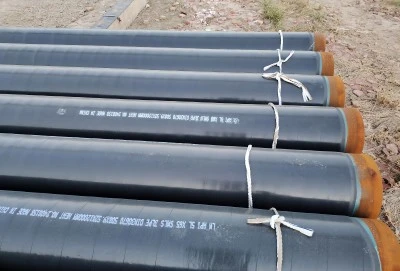ASTM tubing specifications play a crucial role in ensuring the quality, safety, and reliability of steel tubing used across various industries. These standards, developed by the American Society for Testing and Materials (ASTM), provide comprehensive guidelines for the manufacturing, testing, and performance requirements of steel tubing. In this article, we'll delve into the key aspects of tubing specifications, exploring their importance and application in the steel industry.
|
|
|
Key ASTM Standards Applicable to Steel Tubing
ASTM International has established numerous standards that apply to steel tubing, each tailored to specific types of tubing and their intended applications. Some of the most commonly referenced ASTM standards for steel tubing include:
1. ASTM A53: This standard covers seamless and welded black and hot-dipped galvanized steel pipe for use in various applications, including conveying water, steam, air, and other fluids. It's widely used in the construction and industrial sectors.
2. ASTM A106: Specifically designed for high-temperature service, this standard applies to seamless carbon steel pipe for use in high-pressure applications such as power plants and petrochemical facilities.
3. ASTM A500: This specification covers cold-formed welded and seamless carbon steel structural tubing in round, square, and rectangular shapes. It's commonly used in construction and manufacturing.
4. ASTM A179: Applicable to seamless cold-drawn low-carbon steel tubing for heat-exchanger and condenser tubes, this standard is crucial in the energy and chemical processing industries.
5. ASTM A213: This specification covers seamless ferritic and austenitic alloy-steel boiler, superheater, and heat-exchanger tubes, essential for high-temperature applications in power generation and industrial processes.
6. ASTM A254: Covering copper-brazed steel tubing, this standard is particularly relevant for automotive and refrigeration applications.
These standards provide detailed requirements for chemical composition, mechanical properties, heat treatment, dimensions, and testing procedures. By adhering to these specifications, manufacturers ensure that their steel tubing meets the necessary quality and performance criteria for specific applications.
It's important to note that the selection of the appropriate ASTM standard depends on factors such as the intended use of the tubing, operating conditions, and specific industry requirements. Engineers and procurement specialists must carefully consider these factors when specifying ASTM tubing for their projects.
Mechanical Properties Required by ASTM Tubing Standards
ASTM tubing standards outline specific mechanical properties that steel tubing must meet to ensure its performance and reliability in various applications. These properties are typically determined through standardized testing methods and include:
1. Tensile Strength: This property measures the maximum stress that a material can withstand while being stretched or pulled before failing or breaking. ASTM standards often specify minimum tensile strength requirements for different grades of steel tubing.
2. Yield Strength: The yield strength represents the stress at which a material begins to deform plastically. ASTM standards typically define minimum yield strength values to ensure the tubing can withstand expected loads without permanent deformation.
3. Elongation: This property indicates the ductility of the material, measuring how much the steel can stretch before fracturing. ASTM standards often specify minimum elongation percentages to ensure adequate formability and resistance to brittle failure.
4. Hardness: Hardness tests, such as Brinell or Rockwell hardness, may be required by certain ASTM standards to ensure the steel tubing meets specific wear resistance and strength criteria.
5. Impact Toughness: For applications where the tubing may be subjected to sudden loads or low temperatures, ASTM standards may require Charpy V-notch impact testing to assess the material's resistance to brittle fracture.
6. Flattening Test: This test evaluates the ductility and weld integrity of welded tubing by flattening a section of the tube until a specified distance between the plates is reached.
7. Hydrostatic Test: Many ASTM standards require hydrostatic testing to verify the pressure-holding capability and leak resistance of the tubing.
The specific mechanical property requirements vary depending on the ASTM standard and the grade of steel being specified. For example, ASTM A106 Grade B seamless pressure pipe requires a minimum tensile strength of 60,000 psi (415 MPa) and a minimum yield strength of 35,000 psi (240 MPa), with a minimum elongation in 2 inches of 30% for longitudinal strips.
It's crucial for manufacturers to conduct rigorous testing to ensure compliance with these mechanical property requirements. This not only guarantees the quality and performance of the steel tubing but also ensures safety in critical applications where failure could have severe consequences.
Dimensional and Thickness Tolerances Under ASTM Specifications
ASTM tubing specifications provide detailed guidelines for dimensional and thickness tolerances to ensure consistency and interchangeability of steel tubing products. These tolerances are critical for proper fit, function, and performance in various applications. Key aspects of dimensional and thickness tolerances include:
1. Outside Diameter (OD) Tolerances: ASTM standards typically specify allowable variations in the outside diameter of the tubing. These tolerances may vary based on the nominal size of the tube and the manufacturing process (seamless or welded).
2. Wall Thickness Tolerances: The allowable variation in wall thickness is crucial for ensuring the structural integrity and pressure-bearing capacity of the tubing. ASTM standards often provide both plus and minus tolerances, which may be expressed as a percentage of the nominal wall thickness or as fixed values.
3. Length Tolerances: For cut-length tubing, ASTM specifications define allowable variations in the specified length. These tolerances ensure that the tubing can be properly installed and used in its intended application.
4. Straightness Tolerances: Some ASTM standards include requirements for maximum deviation from straightness over a specified length of tubing.
5. Ovality: This refers to the difference between the maximum and minimum outside diameters at any cross-section of the tube. ASTM standards may specify maximum ovality tolerances, particularly for larger diameter tubing.
6. End Finish: Certain ASTM specifications may include requirements for end finishing, such as squareness of cut ends or beveling for welding preparation.
For example, ASTM A500 Grade B structural tubing specifies the following tolerances for round tubing:
- Outside Diameter: ±0.5% of the specified OD for sizes 1.900 inches (48.3 mm) and smaller, with a minimum of ±0.010 inches (0.25 mm).
- Wall Thickness: -10% of the nominal wall thickness, with no upper limit specified.
- Length: For specified cut lengths, the tolerance is +1/4 inch (-0) for lengths up to 24 feet.
It's important to note that these tolerances can vary significantly between different ASTM standards and even between different sizes or grades within the same standard. Manufacturers must carefully control their production processes to ensure compliance with these tight tolerances, often employing advanced measurement and quality control techniques.
Adherence to these dimensional and thickness tolerances is crucial for several reasons:
- Ensures proper fit and assembly in construction and manufacturing applications
- Maintains consistent mechanical properties and performance across the product range
- Facilitates accurate weight calculations for shipping and structural design purposes
- Enables precise flow calculations in fluid-handling applications
- Supports interchangeability of components from different manufacturers
By specifying and adhering to these tolerances, ASTM standards help maintain the quality and reliability of steel tubing across various industries, from construction and automotive to oil and gas and power generation.
Contact Longma
ASTM tubing specifications play a vital role in ensuring the quality, safety, and performance of steel tubing across numerous industries. By defining key standards, mechanical properties, and dimensional tolerances, these specifications provide a comprehensive framework for manufacturers, engineers, and end-users to rely on when producing, selecting, and utilizing steel tubing.
Understanding and adhering to these ASTM standards is crucial for anyone involved in the steel tubing industry, from production to application. As technology and industry requirements continue to evolve, ASTM International regularly reviews and updates these specifications to ensure they remain relevant and effective in meeting the needs of various sectors.
For those seeking high-quality steel tubing that meets or exceeds ASTM specifications, Longma Group stands as a leading manufacturer in China. With a specialization in large-diameter, thick-walled, double-sided, sub-arc-seam welding steel pipe, LSAW (Longitudinal Submerged Arc Welded), and ERW steel pipes, Longma Group has established itself as a reliable partner in the steel industry. By the end of 2023, the company's annual output exceeded 1,000,000 tons, demonstrating its capacity to meet large-scale demands while maintaining strict quality standards. For more information or to discuss your steel tubing needs, please contact Longma Group at info@longma-group.com.














